This Tumblr blog is designed to conenct to BIS 315 students in a professional manner.
Don't wanna be here? Send us removal request.
Text
Week 8: Becoming a Social Organization
After viewing the video lecture on implementation, I will discuss the challenges I believe my client may face when implementing my recommendations.
Based on my knowledge and experience the process of becoming a social organization is an on-going challenge. A challenge for my client is focusing on the technologies when they should focus on achieving a purpose. Additionally, my client lacks knowledge of the fundamental principles of mass collaboration. Furthermore, not all challenges are well-suited to mass collaboration. Finally, my client’s executives and managers lack the confidence to assign a compelling purpose to communities.
My client, Beyond My Battle, struggles most with consistent posting. The organization's purpose for social media and lack of consistent posting has been a major issue. Increasing the number of posts is great, but now it needs to be more consistent. To fix this we need more employees and other managers to take images on a day to day basis.
Another problem is having a strong social media purpose statement. A poor purpose statement is vague and is not unique. In order to improve this, Beyond My Battle should create a new purpose statement for social media and make small incremental goals in order to reach this.
No organization will implement best practices perfectly. However, it is important to adapt to new habits. The key is to help my client see how social media can help them and the organization as a whole accomplish their goals. In order to succeed, my client needs to have the right purpose, community, and social media.
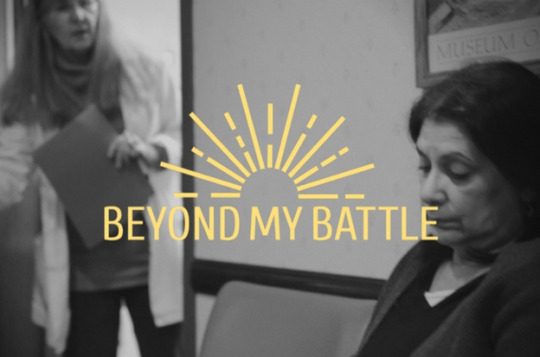
Finally, this was unlike any assignment I have been giving in college. I actually really enjoyed disconnecting from social media. Overall, I had an enjoyable time within this course because I was able to implement the ideas taught on Beyond My Battle. In this role, I learned there is a lot of customer service aspects. Customers are not afraid to reach out with question, comments, and concerns. It became a small part-time job for me to just respond to these customers.
https://chipcast.hosted.panopto.com/Panopto/Pages/Viewer.aspx?id=83dc63e3-464c-4709-a393-ef4f4bba243e
0 notes
Text
Week 7: Developing and Sharing Content
After completing the Hootsuite/Podium module 5, I will discuss how effective content is developed and shared and provide examples and links to illustrate. Additionally, I will answer the following question: What does becoming a social organization have to do with the principles of effective content development and sharing?
First of all, effective content helps long term relationships. Effective content is developed by social media content strategy. Without a plan, it would be difficult for effective cadence; to tell a consistent, cohesive story about your brand. When creating a social media strategy it should flow from objectives, use social media effectively from your objectives, cater to what is successful on each network/platform, and tone and brand voice should stay consistent.
With that in mind, effective content is shared through social media. Social media includes Facebook, LinkedIn, Instagram, Pinterest, and Snapchat. Below are the following ways to effectively share on those platforms:
Facebook Best Practices
1-2 posts per day/vary your pace
Well-researched articles
FB Insights to determine what works consistently
Keep lengths to a maximum of 120 characters
Craft posts with clear language
When sharing links, pick the best image to accompany the post for customers to click on it
Hashtags sparingly
LinkedIn Best Practices
Industry insights, company-specific news, products/services
Instagram
1-2 posts per day
Combine multiple pictures in one post
3-15 seconds of video per post
Hashtags relevant to your business niche
Instagram stories – slideshow format; how-to, behind the scenes, lists, announcements
Pinterest
Images of products, guides
Can lead individuals back to your site?
Option to follow company profile, or boards
One topic per board
Don’t pin new content in large chunks
Snapchat
Overage of 25 demographic
Plan snaps ahead of time to create a cohesive narrative
Beginning, middle, end – behind the scenes look of Starbucks
Exclusive content – fashion sneak peek
Share coupons
Use fun features like filters
An example of an organization that does a great job of being an effective account is Marsh & McLennan. This is an organization comprised of four companies that are all in the realm of insurance. Their social media accounts are updated in trends and analyst in the insurance industry. Website Link: https://www.mmc.com/

Ultimately, becoming a social organization is related to the principles of effective content development and sharing. This is because the only way an organization can be social is if they create strategic company goals first and align all their posts to their companies’ common objective. When creating effective content, organizations need to stay strategic and set a specific target audience, goals, and plans for distribution. If an organization fails to be strategic at the start of their social media journey, chances are that the company will struggle in gaining quality followers and will not be as successful as possible on social platforms. What are your thoughts from this week’s blog post?
2 notes
·
View notes
Text
Week 6: Online Communities
I’ve recently been assigned to read chapters 4 and 5 in the Social Organization, discuss effective principles on online community building with social media and provide examples and links to illustrate. Furthermore, after completing the Hootsuite/Podium module 4, I will discuss what I learned about growing an online community and how these principles apply to the client I am working with on the client project.
While reading the Social Organization, I noticed many effective principles on online community building with social media. For instance, the lesson in the book that talked about knowing where community collaboration is more likely to deliver value made me think about the 3 Rs in Hootsuite. The 3 R’s are relevance, reach, and resonance. These must all be accounted for when deciding what platforms to focus on depending on your organization’s industry and target audience. The book also discusses that the number of overall followers to an organization is irrelevant if new content is not engaging or user-friendly. To make engaging posts, organizations must first fully understand their followers. They must answer questions such as who are the target participants.
• What’s in it for the participants?
• What is the focus of their collaboration?
If an organization does not first answer these questions, there following will likely erode and engagement will suffer as a consequence. Organizations need to be more proactive and less reactive in building successful social communities.
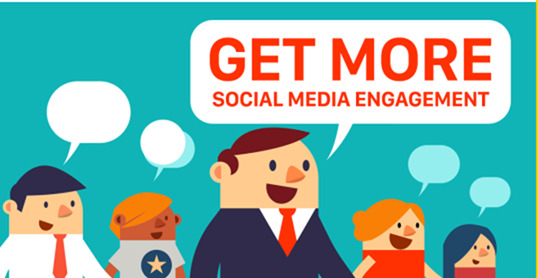
A great example of this is the Madden 20 game. Madden uses a rating adjuster program to update player’s ratings weekly to keep the game relevant, reachable, and resonance for the participants. Please reference the link below: https://www.espn.com/nfl/story/_/id/25527115/best-job-world-life-madden-nfl-ratings-adjuster
Furthermore, I learned a lot about growing an online community and how these principles apply to the client I am working with on the client project. I learned how to use Twitter, Facebook, LinkedIn, Instagram, YouTube, and Snapchat. Below is a summary of each section.
Twitter
Regularly search hashtags relative to a company
Monitor keywords, follow and engage users that use hashtags
Rally community to have a conversation in real-time to solidify new followers
Online relationships offline – to gain prospects, vendors, partners
Responding and acknowledging others on tweets
Deescalate a negative situation
Facebook
To connect with friends and family – keep in mind when leveraging Facebook
Demonstrate customer care and relationship building
Scan brand page, content pages to answer questions
Interactions will bring news feed stories to be seen more
Public (centered around a certain theme, may require heavy moderation), closed, secret groups
Use events to build buzz and connect with those ahead of time – send invite-only to relevant members
LinkedIn
Skews towards professional development
Grow their professional network, keep up-to-date on developments in their industry, explore their career prospects, develop a personal brand
LinkedIn groups – seasoned practitioners to share expertise with you
Community manager (like Facebook), moderate discussions to ensure there are people to add to your community
Send as announcement = sent to everyone in a group
Tag specific people if you know they have relevant information to contribute
Instagram
Three-step cycle – find community, engage, boost visibility
Search for content relating to your brand, tag photos tagged in your location
Search for companies and influencers and like/comment on their followers to gain more of a following
Keep track of those who continuously engage in your posts
Push notifications on influencers
Frequently feature customers on your feed to show you appreciate your support
Activity tab that surfaces content by people you follow – if they go to yours it shows on activity
Ask people if you can tag those taken a picture of at an event
Mentioning fellow influencers in posts
Keep it authentic
Add geotags for those who frequent the area
YouTube
Collaborators – similar interests/values? how will it benefit you and them?
Engage in healthy debate, delete hostile or abusive comments
Take time to connect, take suggestions into consideration
Engage top fans in videos, contests, giveaways
Snapchat
Unique Snap Code – put them on products to sell to automatically add you as a friend
Add Friends – share username
ghostcodes app – feature your Snap based on the business interest
Send reaction snaps via their snap story
Community Metrics to Measure
Community growth (track size of following and rate of growth, quality matters more than amount community has, spot-check method to analyze users for deeper insights/activity of members), engagement (high-quality communities tend to be more engaged, count amount of interaction on posts, check-ins, analyze discussions that take place, ask attendees about how they heard about you), brand love (track following metrics, positive testimonials created, brand advocate roles, amount of user-generated content, third-party blog posts)
Tracked and reported in regular intervals
Community Measurement Data to Work
Evaluate effectiveness – growth, and engagement to assess
Growth related activities – influence outreach programs, increase growth with visibility
If lacking – not talking about or sharing information your customers truly care about
Study other online communities in your community
Study well-engaged channels to build momentum by duplicating success
Building community id building relationships over time
Bradley, Anthony J., and Mark P. McDonald. The Social Organization: How to Use Social Media to Tap the Collective Genius of Your Customers and Employees. Harvard Business Review Press, 2011.
7 notes
·
View notes
Text
Week 5: Social Media Strategy
I’ve recently been assigned to watch "The Legal Side of Big Data,” and discuss the following question: 1) What should businesses be aware of when using big data? 2) What should consumers be aware of? 3) What is the best way to balance the opportunities and threats presented by the development of big data? First of all, businesses should be aware of multiple things when using big data. Businesses should be aware of Government and Big Data, and Technology and Big Data. Government’s data requires applicants to include personal information about mental illnesses, drug, and alcohol use, arrest records, bankruptcies, salary history, insurance records, job history, passwords, and SS numbers. This contains private information of multiple family members and associates (Lalone). Technology data is used to schedule maintenance, dispatching engineering teams to problem solve, and prevent failures. This type of predictive modeling reduces operating costs and enhances safety. However, protecting the captured, modeled, reported on data is a large problem because it’s Big Valuable Data, and many people across many platforms have access to such data masses (Lalone). Additionally, consumers should be aware of multiple things when using big data. Clearly, our government has not taken proper security measures to protect our data assets. The most important thing that consumers should be aware of when using big data is where your data foes post-bankruptcy (Lalone). Companies have records about you and your buying history. When businesses file for bankruptcy everything is for sale, including your data. These sales can include selling your personal information to chinses companies. As seen below data leaks and bankruptcy have affected people’s personal information in many ways.
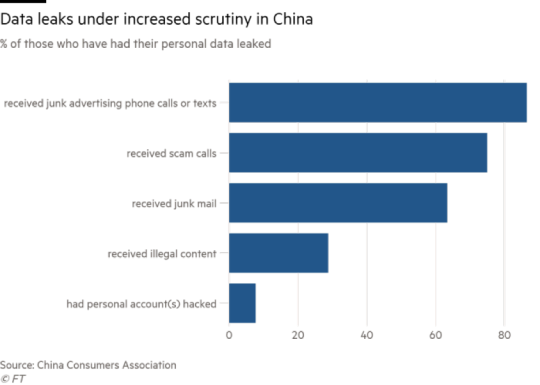
Finally, there is the best way to balance the opportunities and threats presented by the development of big data. In order to balance the opportunities and threats, we first must address the poor risk assessment, and lack of will to prepare. Additionally, we protect as a trade secret, assure contracts are in place that confirms confidentiality, ownership, and use restrictions. Confirm con employment agreements are up to date and employees have limited access. Lastly, companies need to develop strong privacy policies, vendor agreements, ensure the security of where data is housed, and clarify what happens in the event of sale, merger, and bankruptcy (Lalone).
https://chipcast.hosted.panopto.com/Panopto/Pages/Viewer.aspx?id=4fe95594-73e5-4b1a-8a3c-83896b88b6d9
https://www.consumersinternational.org/members/members/china-consumers-association-cca/
2 notes
·
View notes
Text
Week 4: Blog Post 2
I’ve recently been assigned to read the article "Three reasons junk news spreads so quickly across social media" from the Oxford Internet Institute. In my blog post, I will discuss my views on all three of the main reasons given, including algorithms, advertising, and exposure using specific examples that I have drawn from my own experience or from elsewhere. Additionally, I will answer the following question: What should businesses and individuals be aware of, and how can they respond to these conditions?
First of all, junk news spreads so quickly across social media because of algorithms, advertising, and exposure. Search algorithms are foundational to our experience of the Internet today. Without them, we would have to sort through massive amounts of information. Social media platforms rely on algorithms to determine how news and content are disseminated and consumed. The personalization of content has created filter bubbles that limit information flows and perpetuate bias (Oxford Internet Institute).
Additionally, social media platforms are built on collecting user data and selling it to companies to enable them to better understand populations of users, while offering companies the ability to craft and deliver micro-targeted messages to those populations. This advertising model contributes to the spread of junk news. First, the advertising model itself rewards viral content, which has given rise to clickbait. Additionally, it empowers various actors to micro-target potential voters, with very little transparency or accountability around who sponsored the advertisements or why (Oxford Internet Institute).
Lastly, online friend networks often perform social filtering of content, which diminishes the diversity of information that users are exposed to. For instance, people selectively expose themselves to political news and information. The partisanship explanation suggests that people pay attention to political content that fits an ideological package that they already subscribe to, the schemata explanation emphasizes that we take cognitive short cuts and depend on ready-made prior knowledge. A third possibility is that we rely on selective exposure because we don’t want to face the cognitive dissonance of exposure to radically new and challenging information (Oxford Internet Institute).
From my own experience, I have gathered that the rise of social media contributed to the spread of junk news using algorithms. For example, algorithms are used to sort, filter, and deliver content in a manner that is designed to maximize users’ engagement with the content and time spent on the platform. A lot of times social media uses algorithms based on information gathered through Facebook’s Newsfeed, Google’s search, and Twitter’s trending topics.
Additionally, social media uses advertising to make there accounts free to use so individuals who sign up for their services pay with their personal information. Many times on Facebook clickbait is used. For example, Clickbait is content designed to attract attention — often by stimulating outrage, curiosity, or both — in order to encourage visitors to click on a link to a webpage. I noticed this many times during the 2016 elections.
Ultimately, I noticed people are more likely to share information with their social networks that conform to their pre-existing beliefs, deepening ideological differences between individuals and groups. I noticed this kind of exposure during elections on social media platforms.
Businesses and individuals should be aware of these conditions. Businesses and individuals can respond to these conditions in several ways. They should have a plan of action, explain the truth to customers quickly and in full, create a culture of transparency and truth, create a culture of pride and respect, be calmly and intelligently, contact those spreading stories, take legal action and be persistent.
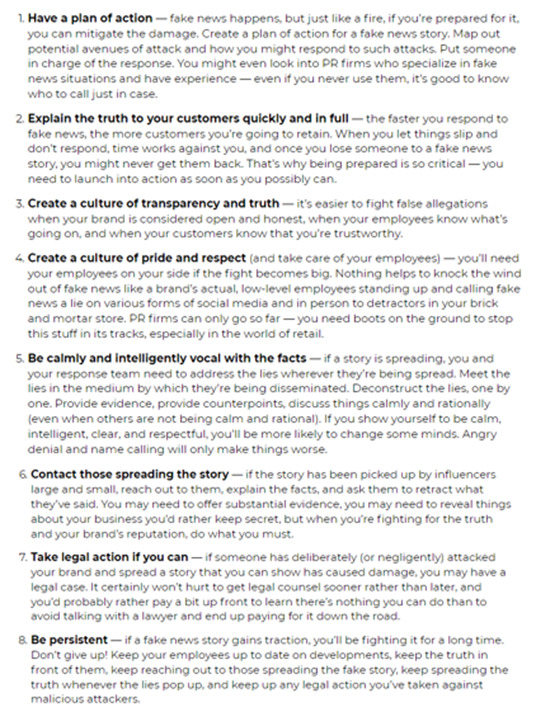
https://www.oii.ox.ac.uk/blog/three-reasons-junk-news-spreads-so-quickly-across-social-media/
https://postfunnel.com/8-ways-combat-fake-news-target-business/
2 notes
·
View notes
Text
WK 4: Optimizing Social Media Profiles
I’ve recently been assigned to watch the instructor's lecture and respond to the following questions:1) What, in your view, are the most important qualities for a social media consultant to have? 2) If you were acting as a social media consultant to yourself, what plans and strategies would you advise improving your professional social media presence?3) What have you done so far, and what could you do in the future?
First of all, there are many important qualities to have for a social media consultant. With that being said, consulting means helping. Someone is willing to pay you for something they cannot do themselves. However, unlike other industries, consulting relies on the creative application of knowledge to a specific problem or opportunity. The most important qualities for a social media consultant to have is problem-solving since most clients don’t know what the clear problem is. In most cases, a client has been told or only knows a problem exists. For example, a small business owner knows their business needs a social media presences of some kind but doesn’t have the expertise of what is needed. Therefore, a social media consultant can work with that owner to figure out who they are trying to reach and what approached will be most effective. Additionally, as stated in The Social Organization, many business and organizations do not use social media effectively because they have not developed the expertise (Melton). https://chipcast.hosted.panopto.com/Panopto/Pages/Viewer.aspx?id=c179ac90-6eb7-4492-b72a-687a941e24b0
Furthermore, if you were acting as a social media consultant to yourself, I would have many plans and strategies to improve your professional social media presence. As a social media consultant, most of your work is to be an educator and advisor. You are there to help your clients understand problems and opportunities and give them the tools to move forward. Therefore, if I were acting as a social media consultant to myself, I would recommend writing a strong bio that specifically states purpose. A strong bio could include the main location of your business to connect with followers, or links to other social media platforms for followers to further their interaction with the business. Another tactic that can be utilized for Twitter is the likes tab. Strategically liking things that relate to your brand and products makes the likes tab more useful to any follower and will automatically ensure that you are a reliable source. You could simply add a call-to-action button, as shown below, to gain more follower interaction. https://www.quora.com/How-do-I-change-unpublished-Facebook-posts-to-published
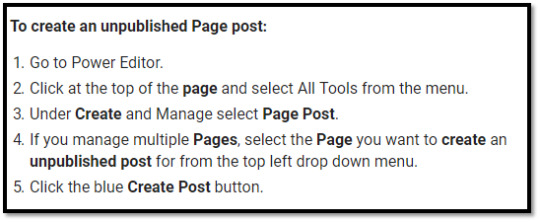
Lastly, I have taken the necessary actions to develop my social media in a professional manner. Thus far, I have optimized my Twitter, LinkedIn, Facebook, and Instagram. In the future I could, create an easily recognizable profile picture, create a logo/header, and use keywords that describe the
4 notes
·
View notes
Text
WK 3: Social Media, Privacy, and Internet Business Models
I’ve recently been assigned to watch the instructor's lecture and view the 60 Minutes segment "The Data Brokers". Additionally, I read "The Internet's Original Sin" and watched Maciej Ceglowski's talk. Throughout this post, I will 1) Explain how "big data" relates to information privacy. 2) Why is big data such a powerful tool, and 3) What are the dangers of its abuse? 4) What are my views about how to limit harm from big data, on both the personal and societal levels? Finally, 5) I will discuss how internet business models influence surveillance and data gathering on the internet.
First of all, big data relates to information privacy. Understanding privacy is important because it can impact any aspect of a business. Big data is the storage and analysis of large and or complex data sets. We can now store and analyze a lot of data. “We’re addicted to ‘big data’ not because it’s effective now, but because we need it to tell better stories.” So we build businesses that promise investors that advertising will be more invasive, ubiquitous, and targeted and that we will collect more data about our users and their behavior (Zuckerman). https://www.theatlantic.com/technology/archive/2014/08/advertising-is-the-internets-original-sin/376041/
With that being said, big data is a powerful tool. The scope of the data is so large and the tools are so powerful, we can put unrelated material together to paint a picture. With a powerful big data business intelligence platform, answering these questions becomes a relatively straight-forward process. One of the most important benefits of big data is the ability to ask and answer questions more robustly. The whole process of answering complex questions can be shortened from months and weeks to days and even hours or minutes. A great big data analytics platform allows a business to expand the type and amount of data it works with, and the best platforms also make it easy to build data-empowered presentations (Schloss). https://www.datameer.com/blog/three-major-benefits-big-data/
Furthermore, there are dangers of its abuse. This information collected can be packaged, analyzed, and sold including information about our health, addictions, location, and finances. When most of the online material is free we become the product. We don’t have to pay for social media but we trade that use for our information. The problem with big data is our data is permanent, our data is beyond our control, and cant contest it or be deleted. This can have implications for people when they are trying to get a job (Melton). https://chipcast.hosted.panopto.com/Panopto/Pages/Viewer.aspx?id=d59b80cb-70ca-44ee-a3c1-1a4ab67d6f18
Additionally, there are ways to limit harm from big data, on both the personal and societal levels. Most of the ways businesses use big data to have ethical decisions. Individuals are becoming more aware of what data is being collected and may turn against the companies that violated their trust (Kroft). Please see the figure below of ways to protect yourself from the harm of big data.
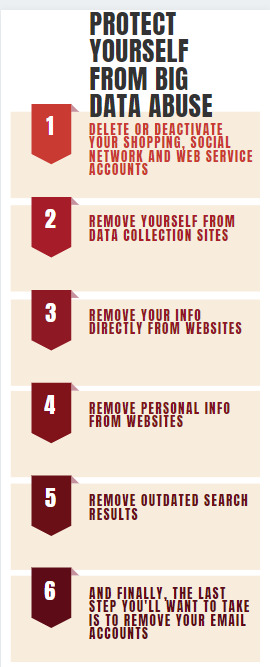
https://www.youtube.com/watch?v=qAT_ina93NY
https://www.cnet.com/how-to/remove-delete-yourself-from-the-internet/
Finally, internet business models influence surveillance and data gathering on the internet. With many apps being free, the only way for companies to make money is through advertising. Effective advertising requires surveillance. Therefore, we download a free game we agree for the company to download information about us including locations, contacts, and other online activity (Tellerrand). https://vimeo.com/102717446
Undoubtedly, Information privacy is a complex issue and is not going away. It is our job to use social media effectively. Thinking critically, and acting from the standpoint of law and ethics and also using social media in ways that will provide real value and strengthen customer engagement and trust.
2 notes
·
View notes
Text
Social Media Experience
Based on what I found in tracking my social media use and recording it in a log, I created an experiment in which I alter my social media use significantly. For this experiment, I chose to do the one 24 hour period without using any social media platforms at all. After completing my social media blog, I was absolutely disgusted with the amount of time that I spent on my phone (3 hours and 15 minutes spent on screen time). Including, 37 Instagram pictures liked, 3 Snapchat stories posted, 45 text messages sent, and 1 Facebook post. I was excited to see what could happen and how much I could actually accomplish without my phone glued to my hand. On Tuesday, June 25th I put my phone away when I woke up at 10 am and didn’t pick it back up until June 26th at 10 am.
Throughout my experiment, I did not watch any TV, play any electronic games, and use my cellphone or any mobile devices. I struggle with checking my phone and being involved with social media. With that in mind, I had to hide my phone because I didn’t have enough will power to resist it.
When I woke up on Tuesday, it was weird not to automatically check my phone right away. At first, I experienced feelings of anxiousness and but I soon realized that I had a lot more free time on my hands. Not being on my phone in the morning, really got me motivated to get up faster and start my day. During breakfast, I definitely had more meaningful conversations with my family without constantly being sidetracked by my phone. Without being on my phone, I had a lot of free time. I was able to get a lot done. I went outside, caught up on readings, went for walks with my family, went to the gym, and washed my car. Throughout the day, the busier I became and activated my mind I soon realized that the feelings of anxiousness went away and I started to feel extremely accomplished and stress-free. It was a really good feeling. However, I noticed that when I was getting ready to go to bed it was hard not to be on my phone or watch TV because I am so used to use technology to occupy my mind. Instead, I decided to draw as I use to when I was a kid, it’s amazing of how stepping away you rediscover old passions.
However, this experiment also came with a lot of problems. I learned I depend on my phone and electronics a lot and it’s hard to operate daily without it. I needed my cell phone to set my alarm, check the time periodically, and even make a list of task to accomplish for the day. Ultimately, throughout this experiment I learned without social media I was a better communicator. I really enjoyed this experiment and was proud of myself for sticking to my rules and not using my phone of any other social media.
Additionally, I found that looking at my phone was habitual. I found myself beginning to do my routine throughout the day and had to catch myself because I would begin to pull out my cell phone to view what was going on. The second thing that I discovered is that without viewing my phone I had more time in my day. I interacted with people in a face to face manner. This was noticeable to my family who was very pleased. This made me think that the information presented by Sherry Turkle had validity. Not looking at my phone gave me the opportunity to talk more. Turkle relates a similar experience. Furthermore, I learned when I returned to my phone after one day, I found that my desire to be on my phone decreased, I realized I have to modernize my use to balance a healthy lifestyle.
4 notes
·
View notes
Text
Social Media - WK 2
I’ve recently been assigned to Watch Sherry Turkle's interview and read Emma Rathbone's article, “Before the Internet”, found in The New Yorker on June 19, 2017. This article’s major theme was about how before the internet times were much simpler. Furthermore, Sherry Turkle’s interview, discussed our relationship with technology, about what this constant engagement means for our culture and our society. Our devices are changing the way we communicate and interact with each other. There are many concerns with the development of psychologist in children. Ultimately, Everyone is always having their attention divided between the world of people [they’re] with and this ‘other’ reality.”
With that being said, throughout this discussion board, I will discuss (1) what I think is social media’s influence in my daily life. (2) How I think having the Internet constantly available affects my life. (3) Some times when I haven't had access to the Internet for an extended period of time, and what was it like.
Social media influences my daily life. I use social media for many things, such as socializing, finding and sharing information, shopping and simply as a diversion from a face-to-face conversation. I use social media a lot throughout the day. For instance, in a recent study, I noted the following time spent on various forms of social media. • Spotify – 25%; 6 minutes on screen, 2.2 hours background • Instagram – 22%; 38 minutes on screen, 2 minutes background • Snapchat – 10%; 14 minutes on screen, 10 minutes background • Messages – 7%; 31 minutes on screen • Facebook – 2%; 6 minutes on screen, 6 minutes background
Having the intern constantly available affects my life. Even though there are positives to always being able to access the internet, such as looking up direction, cooking recipes, and even health question there are also negatives. These are just a few of the ways that social media can improve people's lives. On the other hand, social media can cause stress and other negative emotions. With the internet constantly, available I don’t always pay attention in class, or even read the textbook thoroughly. Additionally, the use of social media always makes me unfocused and interrupts several of my daily conversations.
Finally, whenever I go camping I don’t have access to the internet for an extended period of time. For me, this is very hard because I am dependent on my phone and social media. When I am unable to access the internet, I start experiencing anxiety, sadness, and depression. I notice I am Unable to keep schedules: Furthermore, I use the Internet to do a lot of things like looking for information, corresponding, paying bills, and doing financial transactions. Therefore, without those apps, I struggle to keep up to date and have a fear of missing out.
Lastly, throughout this post I discussed (1) what I think is social media’s influence in my daily life. (2) How I think having the Internet constantly available affects my life. (3) Some times when I haven't had access to the Internet for an extended period of time, and what was it like. What are your thoughts on the use of social media?
5 notes
·
View notes
Text
My name is Adam Dietrich, I am a senior double majoring in Logistics Management and Marketing while minoring in Information Systems with a focus in SAP at Central Michigan University. While I have a comprehensive purchasing background, my emphasis is on Supply Chain Management, Marketing, and Logistic Operations.
I previously held two back-to-back internships with Marathon Petroleum Company, in Garyville, Louisiana and Catlettsburg, Kentucky. While there, I served as a Materials Buyer and a Material Controller. As a Materials Buyer, I temporary served as a fill-in buyer for Instrumentation and Rotating Equipment commodities. Furthermore, I helped trained and assisted new employees in SAP, Microsoft Excel, Outlook, and SRM Online Services. As a Material Controller, I also worked in SAP to set up new stock numbers, deleted obsolete materials, and generated new purchase requisitions. I used relevant SAP transactions to extend new material setups and change existing material types. Finally, I confirmed existing stock, reorder points and maximum inventory levels for planned orders in SAP. After graduating from CMU this summer, I will be pursuing a career with Marathon Petroleum Company this fall.
I hope to accomplish several skills from my blog. I hope to learn a new style of writing, learn about new software and applications, and strengthen my communication skills with social media. After completing this course, I will be able to analyze the use of social media in business contexts, design and implement social media strategies for specific business scenarios, utilize specific social media technologies for business purposes, develop creative applications of social media, collaborate with others using social media, design and build career paths through social media, initiate lifelong learning through social media, and understand the impact of institutional and national culture on social media use.
Furthermore, an organization that is exemplary with regard to its use of social media is American Eagle (https://www.ae.com/us/en). American Eagle is powered by a new set of mass collaboration-enabling technologies. American Eagle uses technology such as wikis, blogs, microblogs, social networking, social bookmarking, tagging and tag clouds, social feedback, discussion forums, idea engines, answer marketplaces, prediction markets, and virtual worlds to make it possible for large groups of people to collaborate.
Additionally, AE has community and purpose. Ultimately, AE is doing well because they created and sustained a collaborative community. The launch takes the community from opportunity and purpose to reality and includes a variety of activities. The guide is where the collaborative forms and does it work. Finally, they refined their purpose and are able to have a greater impact on the market.
4 notes
·
View notes